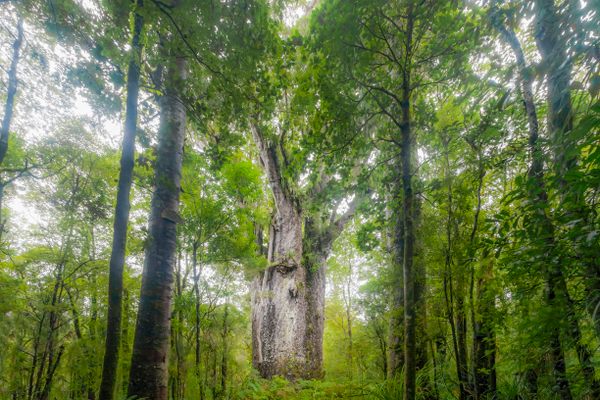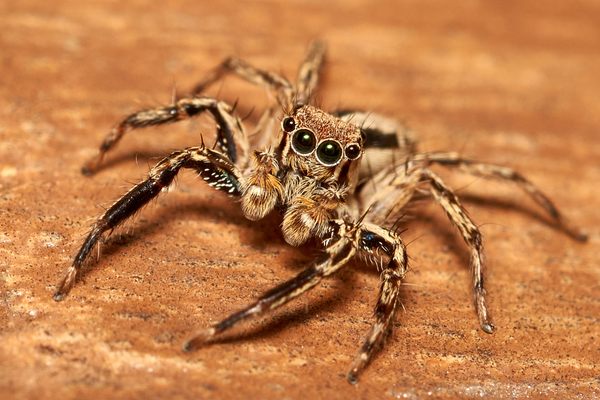Wonder Is Everywhere: Silk Dress Secret, the Last Lightkeeper, and More From Around the Web
Get a peek into what we’re obsessed with right now.
Wonder is everywhere. That’s why, every other week, Atlas Obscura drags you down some of the rabbit holes we encounter as we search for our unusual stories. We highlight surprising finds, great writing, and inspiring stories from some of our favorite publications.

Laughter Is Universal, but LOL Is Not
by Amy Thorpe and Ravi Hiranand, Rest of World
In person it’s easy to recognize laughter, no matter what language you speak. But online, different cultures express amusement differently, in ways that can be hard to translate. While an English speaker is LMAO, a Japanese speaker might be 大草原 (literally, “giant grass field”) and a Turkish speaker might be “askfhsjkd”—laughing so hard they can’t type.
A Lighthouse Keeper Hangs Up Her Bonnet
by Diana Cervantes, Hakai Magazine
The only remaining official lighthouse keeper in the United States has retired. After 20 years as a volunteer, Sally Snowman stepped down as the keeper and historian of the 307-year-old Boston Light, on Massachusetts’ Little Brewster Island. The U.S. Coast Guard will maintain the facility.
The Daredevil Flight to Save Rare Birds
by Sophie Hardach, BBC
Late each summer, scientists lead young bald ibises on weeks-long flight from their summer breeding sites in Austria to their wintering grounds, part of an effort to save a bird that had been hunted to near-extinction. For two decades, the ibises spent the colder months in Italy, but climate change has forced them to relocate this year to a new winter sanctuary in Spain.
Gullah Geechee Descendants Fight to Maintain Historic Black Communities
by Sharon Johnson, Associated Press
In the late 19th and early 20th centuries, there were more than 1,200 settlements founded by formerly enslaved people. Today, only 30 incorporated historic Black towns remain in the United States. The communities were devastated first by race massacres and other acts of overt racism, and later by zoning ordinances and tax burdens that fueled gentrification. In South Carolina, Gullah Geechee communities are fighting back.

A 4-Year-Old Discovers a Shipwreck From 1871
by Praveena Somasundaram, Washington Post
While fishing near Green Island in Wisconsin, four-year-old Henley Wollak and her father Tim stumbled upon something unexpected. “I think it’s an octopus,” Henley told her father. But they now believe it to be George L. Newman, a 122-foot ship destroyed in the 1871 Peshtigo wildfire, among the deadliest in U.S. history.
A Silk Dress Reveals the History of Early Weather Forecasting
by National Oceanic and Atmospheric Administration
A silk dress with a cryptic message tucked into a hidden pocket in the bustle inspired a decade-long effort to unlock its secrets. Now an amateur codebreaker has found the answer: the seeming gibberish—“Bismarck, omit, leafage, buck, bank”—is a weather report, written on a clear, cold day in Bismarck, North Dakota, on May 27, 1888.

Cerne Abbas Giant Is Hercules, Historians Say
by Steven Morris, Guardian
The Cerne Abbas giant, an enormous naked man etched into a hillside in England has perplexed historians for centuries. What did the figure represent and how was it used? Now researchers suggest the giant is Hercules and that the area was a muster point for Saxon armies fending off Viking attacks in the 10th century.
Who Will Buy the World’s Largest Hockey Stick?
by Logan Lockhart, Goldstream News Gazette
For more than three decades, a 205-foot hockey stick has adorned the Cowichan Community Centre on Vancouver Island in British Columbia. Now the world’s largest hockey stick is for sale—its value estimated at north of $75,000—at the same time that its supremacy is threatened. Lockport, Illinois, has approved plans to build a much larger hockey stick for its new rinks—some 250 feet long.





































Follow us on Twitter to get the latest on the world's hidden wonders.
Like us on Facebook to get the latest on the world's hidden wonders.
Follow us on Twitter Like us on Facebook